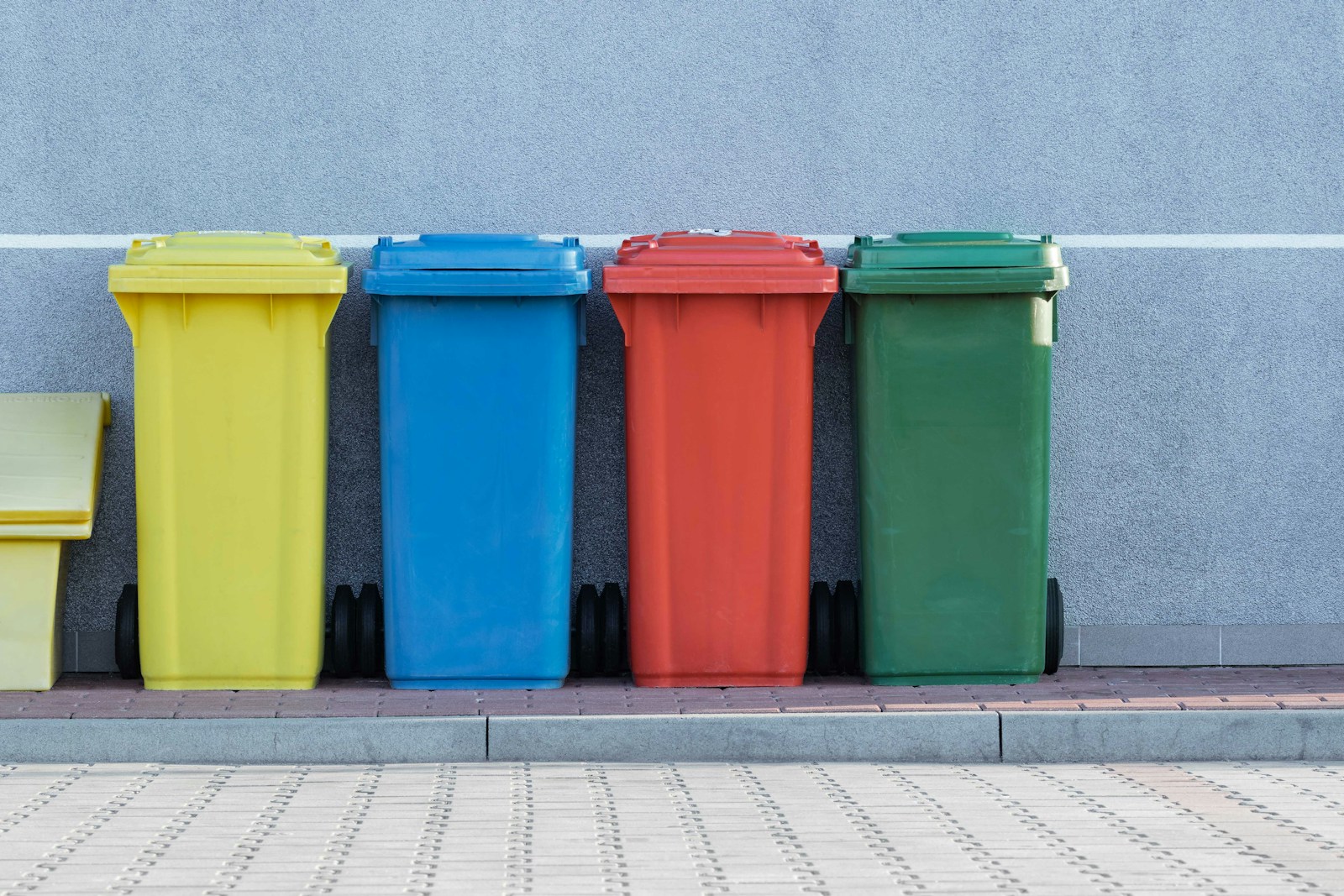TL;DR:
– Start recycling at home by setting up a recycling station and following local guidelines.
– Upcycle household items creatively, like using glass jars for storage or repurposing old clothing.
– Shop sustainably by choosing eco-friendly products and energy-efficient appliances.
– Incorporate green decor with indoor plants and sustainable materials.
– Explore future trends like smart technology and circular economy practices for eco-friendly living.
Introduction
Looking to transform your living space into a sustainable sanctuary? Welcome to the Recycling Home, where innovation meets eco-consciousness. In this blog post, we delve into 5 futuristic ways to achieve sustainable living seamlessly. As a seasoned expert in Futuristic Homes and Sustainable Living, I am thrilled to guide you through cutting-edge strategies to not only reduce your carbon footprint but also elevate your lifestyle. Get ready to explore how simple tweaks and eco-friendly choices can pave the way for a greener, smarter, and more connected future right within the walls of your home. Let’s embark on this transformative journey together!
How to Start Recycling at Home
Do you want to make a positive impact on the environment right from your own home? Recycling is a simple yet powerful way to reduce waste and promote sustainability. Let’s explore practical steps to kick-start your recycling journey.
Setting Up a Recycling Station
– Designate a specific area in your home for recycling bins or containers.
– Label each bin for different types of recyclables like paper, plastic, glass, and metal.
– Ensure easy access to the recycling station to encourage consistent use.
Understanding Local Recycling Guidelines
– Research and familiarize yourself with your community’s recycling guidelines.
– Check which materials are accepted for recycling and any specific sorting requirements.
– Follow the rules to ensure your efforts contribute effectively to the recycling process.
Tips for Sorting and Organizing Recyclables
– Rinse containers before recycling to prevent contamination.
– Flatten cardboard boxes to save space and facilitate recycling.
– Create a routine for sorting recyclables regularly to maintain a sustainable habit.
Start your recycling journey at home today and make a difference for a greener future.
Creative Ways to Upcycle Household Items
Do you often find yourself holding onto old items that you no longer use? Instead of letting them gather dust or throwing them away, why not explore the art of upcycling? Upcycling is the process of turning old or discarded items into something new and useful, giving them a new lease on life while reducing waste. Let’s explore some creative ways to upcycle household items and incorporate sustainable practices into your daily life.
Turning Glass Jars into Storage Containers
– Clean out empty glass jars from jams, sauces, or pickles.
– Repurpose them as storage containers for spices, herbs, or dry ingredients.
– Add a decorative touch by painting the lids or labeling the jars for easy identification.
Using Old Clothing for DIY Projects
– Transform worn-out clothing into reusable cleaning cloths or kitchen rags.
– Repurpose denim jeans into trendy tote bags or patchwork quilts.
– Get creative with sewing and crafting to breathe new life into old garments.
Repurposing Furniture for a Fresh Look
– Give dated furniture pieces a makeover with a fresh coat of paint or new hardware.
– Convert an old wooden door into a rustic dining table or decorative wall art.
– Combine different furniture elements to create unique, multi-functional pieces for your home.
By exploring these upcycling ideas, you not only contribute to a more sustainable lifestyle but also unleash your creativity and resourcefulness in transforming everyday items into new treasures. Get inspired to upcycle and make a positive impact on your living environment.
Sustainable Shopping for Your Home
In a world increasingly focused on sustainability, making eco-conscious choices for your home is essential. But where do you start? Sustainable shopping for your home is a key aspect of living a more environmentally friendly lifestyle. By choosing products that are eco-friendly, you can reduce your carbon footprint and contribute to a greener future for our planet.
Choosing Eco-Friendly Cleaning Products
Traditional cleaning products often contain harmful chemicals that can be damaging to the environment. When shopping for cleaning supplies, look for products that are labeled as environmentally friendly, biodegradable, and free from harsh chemicals. By making the switch to eco-friendly cleaning products, you can keep your home clean without harming the planet.
Opting for Reusable Kitchen Essentials
Single-use plastics have become a major environmental issue, particularly in the kitchen. To reduce your plastic waste, opt for reusable kitchen essentials such as stainless steel straws, silicone food storage bags, and beeswax wraps. These eco-friendly alternatives can help you minimize your impact on the environment while still enjoying the convenience of modern living.
Investing in Energy-Efficient Appliances
Energy-efficient appliances not only help you save on your utility bills but also reduce your home’s energy consumption. When shopping for new appliances, look for models that are Energy Star certified, as they are designed to be more energy-efficient. By investing in energy-efficient appliances, you can lower your carbon footprint and contribute to a more sustainable future for all.
By making sustainable shopping choices for your home, you can play a crucial role in protecting the environment and creating a more sustainable future for generations to come.
Incorporating Green Decor into Your Home
Did you know that the decor you choose for your home can contribute to reducing your carbon footprint? This sustainable approach is much about rethinking our choices and considering alternatives that are both stylish and environmentally friendly. Let’s explore how you can incorporate recycling home decor into your living space.
Adding Indoor Plants for Natural Air Purification
Indoor plants not only enhance your home aesthetics but also act as natural air purifiers by absorbing toxins and releasing oxygen. Examples of such plants are snake plants, Boston ferns, and spider plants. They’re a living part of your decor, providing a fresh atmosphere and a vibrant touch.
Decorating with Sustainable Materials
Recycling home decor doesn’t mean compromising on style. Opt for decor items made from recycled or sustainable materials like bamboo, reclaimed wood, or recycled metal. These choices contribute to a lower environmental impact and bring a unique, earthy sense of style to your home.
Creating a Zero-Waste Home Design
Aim for a zero-waste home design by adopting practices that reduce environmental harm. Choose furniture that lasts longer, opt for furnishings made from organic, biodegradable materials, and switch to LED lights which are energy-efficient. Not only will you be reducing waste, but creating a natural, eco-friendly atmosphere in your home.
Remember, small changes make a big difference. Incorporating green decor in your home is a step towards responsible living and a happier planet.
Future Trends in Home Recycling
As we look towards the future of sustainable living, the concept of recycling homes is gaining momentum. But what can we expect in terms of futuristic trends in home recycling? Let’s explore some innovative ideas shaping the way we live sustainably.
Smart Technology for Eco-Friendly Living
Smart technology is revolutionizing the way we manage our homes. From smart bins that automatically sort recyclables to apps that track our waste production, technology is making it easier than ever to live eco-consciously. Imagine a home where a smart system lets you know when your recycling bin is full and even schedules pick-ups for you. The future of home recycling is looking increasingly convenient and efficient with the integration of smart technology.
Innovations in Waste Management
The traditional ways of waste management are rapidly evolving to meet the demands of a more sustainable society. Companies are developing innovative solutions such as converting organic waste into compost or creating new materials from recycled plastics. These advancements not only reduce our environmental footprint but also pave the way for a greener future. Keep an eye out for cutting-edge waste management technologies that could soon become common in our homes.
The Rise of Circular Economy Practices
A circular economy envisions a world where resources are continuously reused and recycled to minimize waste. In the context of home recycling, this means designing products with longevity in mind and ensuring that materials can be easily repurposed or recycled at the end of their life cycle. From furniture made from recycled materials to packaging that is fully biodegradable, the circular economy is reshaping our approach to consumption and waste management. Embracing these practices in our homes can lead to a more sustainable and circular future.
In the next section, we will delve deeper into the emerging trends in sustainable living and how they are shaping the way we think about our homes and the environment. Stay tuned for a closer look at the future of recycling and sustainable living.
Conclusion:
In the pursuit of sustainable living, recycling home emerges as a beacon of hope for a greener tomorrow. By exploring futuristic solutions like upcycling, smart waste management, and self-sufficient designs, we pave the way for a more eco-conscious lifestyle. Recycling home isn’t just a trend but a necessity to combat environmental challenges. Embrace the power of recycling home and transform your living space into an eco-friendly sanctuary. Let’s journey together towards a more sustainable future. Start your recycling home transformation today!










